Can Tomatoes Grow In Clay Soil? + Growing Tips!
Are you wondering, ‘Can tomatoes grow in clay soil?’
Have you tried to plant tomatoes in your garden over a month ago but they have barely grown? Or maybe they grew for a while but have few leaves or might even look half dead (uh-oh).
You’ve tried everything but you’re not sure if tomatoes do well in clay soil.
I have good news, tomatoes CAN grow in clay soil!
In this post, I’ll share the best ways to grow your tomatoes in clay soil step-by-step.
I’ll also share easier alternatives (perfect for beginners if you’ve just started gardening) and how to make your clay soil better for gardening in the long run!
Affiliate Link Disclosure
Some of the links on here are affiliate links, and I may earn if you click on them, AT NO EXTRA cost to you. I hope you find the information here useful! Thank you so much.
Related Posts
- What Size Grow Bag For Tomatoes Is Best?
- How Cold Can Tomatoes Tolerate?[+Tips To Keep Them Juicy]
- How Many Tomatoes Per Plant? (And How To Grow More!)
- How To Grow Moneymaker Tomatoes +Tips To Grow Faster! [2022]
- How To Grow Oxheart Tomatoes+ Unique Growing Tips [2022]

Can Tomatoes Grow In Clay Soil?
Yes, tomatoes can grow in clay soil!
It is possible but when planting in clay soil, it’s important to remember that clay has two major characteristics that make it hard to grow tomatoes.
Clay tends to hold water which prevents nutrients from moving through the soil. Your tomatoes need water and nutrients to thrive!
Clay is also alkaline with a pH of over 7.0. Tomatoes grow really well in acidic soil with an optimal pH of between 6.0 and 6.8.
Even so, you shouldn’t let this stop you! Nothing beats the feeling of picking out your fresh tomatoes in the backyard and eating it for your own health benefits.
The Best Ways To Grow Tomatoes In Clay Soil
For me, it doesn’t matter what type of soil do tomatoes grow best in as long as I know what are the best ways to grow them in the clay soil that I have in my garden.
Now that you know you can successfully grow tomatoes in clay soil, let’s take a look at the best ways to do it:

1. Do A Soil Test First
The first step in preparing soil for tomatoes is to do a soil test. It is important as this helps you determine the pH level of the soil and helps you identify if it needs other nutrients.
You can use a simple pH test to determine its acidity or alkalinity and identify what to add to soil for tomatoes.
Once you establish a baseline pH, you can amend the soil appropriately. To lower your soil’s pH and make it more acidic, add sulfur into the soil.
To raise your soil’s pH and make it more alkaline, add lime into the soil.
It is essential to get an appropriate pH as the best soil for tomato plants has a pH reading between 6.0 and 6.8.
2. Grow One Hole At A Time
An easier approach to preparing your soil for growing tomatoes is to dig one hole in the ground for each plant.
This means you work on smaller sections instead of the whole garden. This is more practical as clay soil is hard to amend — so save your energy and focus on growing one hole at a time!
For each hole, dig a foot wide and a foot deep. Space the holes at least two feet apart.
If possible, aim for a section of the garden where your tomato plants will get plenty of sunlight, for at least 8 hours throughout the day.
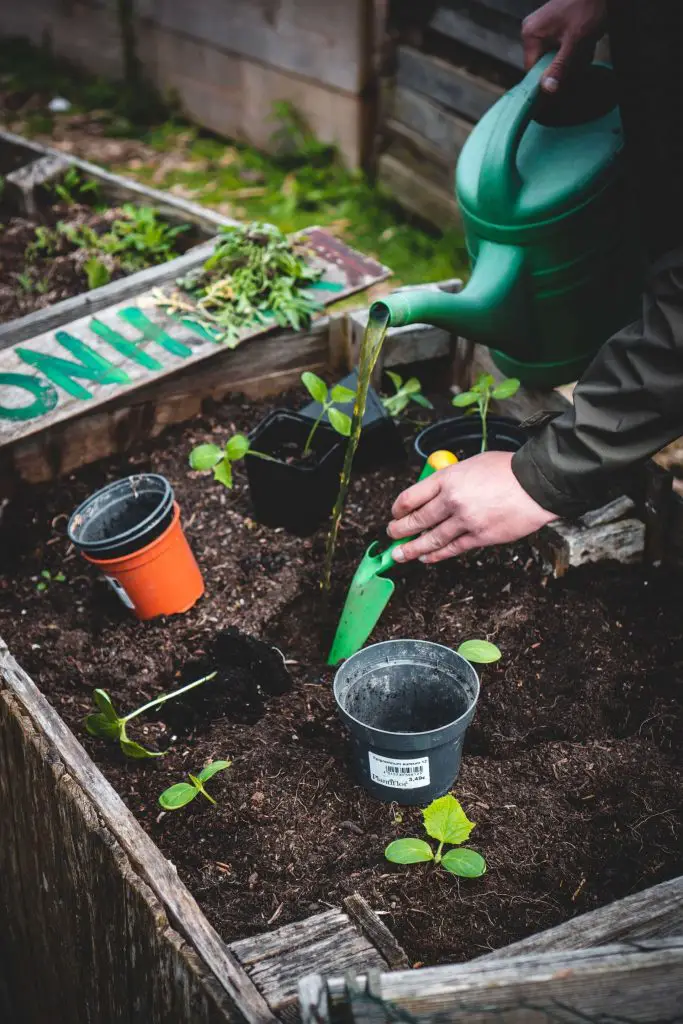
3. Amend The Soil Vigorously
Have you heard of the saying, “Dig a twenty-dollar hole for a ten-dollar tree”?
Amending the soil is no easy feat but this is not one of the things you can cut corners with when you want the best soil for tomatoes. If you want to have crops that grow well in clay soil, you need to amend the soil vigorously.
If you’re wondering how to amend soil for tomatoes, for each hole you dig you need to add generous portions of compost, manure, and wood ash.
Mix it evenly with the soil you removed from the hole with a garden fork. Remember to add water before planting.
4. Staking Your Tomatoes In Clay Soil
I would recommend staking your tomatoes from the beginning when you plant the seedlings. This is because the ground is still soft and accessible.
More importantly, wooden stakes will protect tomato plants from harsh winds and save any fruits from rotting!
To stake your tomatoes, mark a spot about 5 inches away from the tomato plant to avoid root damage and pound it into the ground about 10-15 inches.
If you would like firmer support for the plant, you can also consider using cages or trellises instead of wooden stakes.
Make sure to check how tall your tomato plant will grow before selecting the stakes, cages, or trellises so they can provide enough support for the tomatoes to grow.
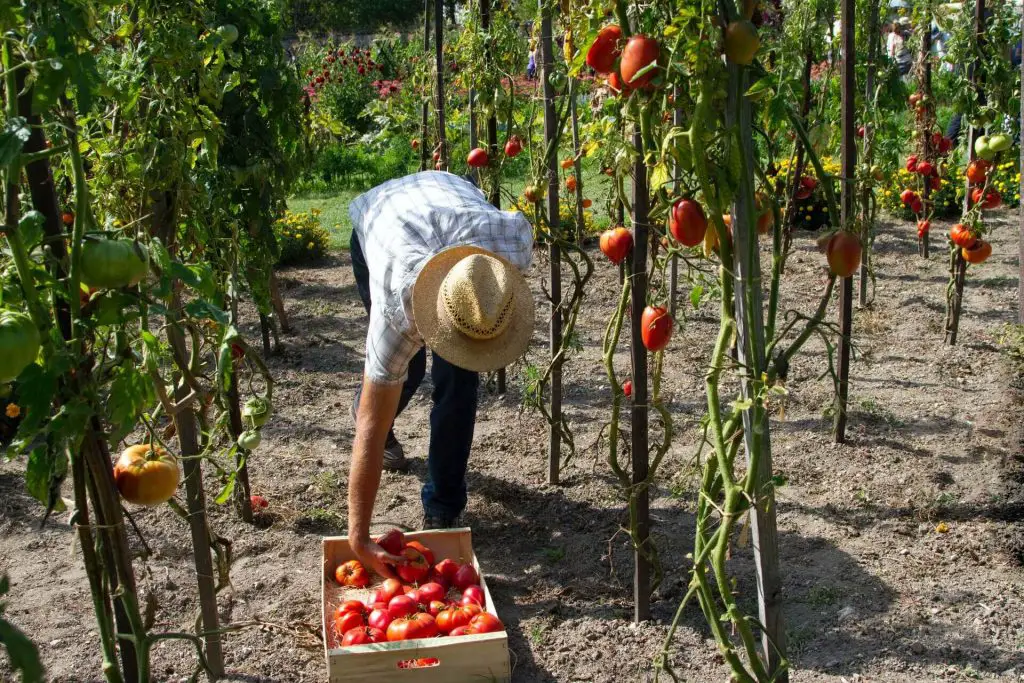
5. Why You Should Mulch When Growing Tomatoes In Clay Soil
An essential aspect of growing tomatoes in clay soil is mulching the tomato plant.
Mulching helps to retain moisture, avoid water pools around the plant, and prevent weed growth.
Plus, mulch will keep the garden bed from drying out. If this happens, any clay in your soil will become dense and compact if it’s not moist.
To mulch your tomato plants, you have a few different materials to choose from like hay grass, straw, or mulch paper.
What is more important is that you start with a heavy layer of mulch.
As the days pass and as the organic material starts to decompose in the soil, you must replenish more mulch to retain the moisture.
6. Water And Fertilize According To Schedule
An important step of how to prepare soil for tomatoes is to water and fertilize it according to schedule.
You may water the tomato seedlings daily. You need to make sure the soil is moist all the time and generally, tomato plants require about 1 – 1.5 inches of water a week.
You also need to fertilize your tomato plant as flowers begin to develop and again when fruits start to grow. From there, adding fertilizer once every two weeks should be enough.
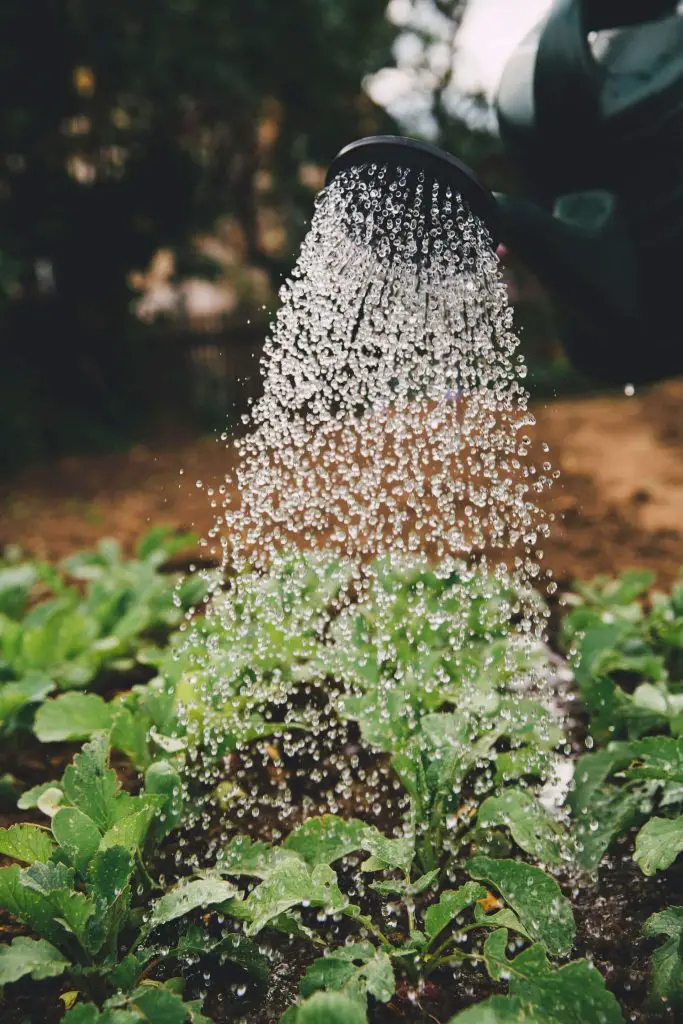
How Do You Know Your Garden Has Clay Soil?
You might notice that your garden has clay soil if you observe that your soil becomes heavy and slimy when you water it.
Not only that, but the soil will also likely form big chunks that are hard to separate, become hard, and crack in dry weather.
You may also have noticed water puddles on the ground rather than the water soaking in.
If you are observing these signs, chances are it’s clay soil! Another simple way to know for sure if your garden has clay soil is by doing a soil test.
Why It’s Hard For Tomatoes To Grow In Clay Soil
If you’re wondering about what soil do tomatoes grow best in, clay soil may not top the list because of the two major drawbacks mentioned above – compaction and alkalinity.
Compaction makes it hard for plant roots to grow due to a lack of water and nutrients. Seedlings can get trapped in the hardened soil and snap at the base.
Clay soil also tends to be alkaline. This is not suitable as tomatoes are best grown in slightly acidic soil with a pH of between 6.0 and 6.8.
Not only that but if you’ve never tried to grow plants in heavy and sticky soil, don’t underestimate how tricky it can be! It’s almost impossible to dig, even with a new spade.
But don’t worry, it is still possible to successfully grow tomatoes in clay soil. In fact, there are easier ways to go about it considering the options below.
Easier Alternatives For Tomatoes To Grow In Clay Soil: Open-Bottomed Raised Beds Or Containers
If you want to take an easier route to grow tomatoes in clay soil, I would recommend raised beds with open bottoms.
In order for it to be a nutrient-rich home for your tomatoes, fill the raised bed with the best soil mixture for tomatoes. A healthy combination of compost, manure, peat, and topsoil.
Tomato plants tend to have large root systems and will take up the space below the raised bed. With open bottoms, the organic nutrients will seep downward and eventually amend the soil!
Another great option is to grow the tomatoes in containers. Containers allow for portability which is convenient! You can move it to take advantage of the best growing conditions in your compound.
To start container gardening, choose a 5-gallon bucket and fill it with high-quality potting soil. I find that the best potting soil for tomatoes includes sandy loam.
It is the ideal organic potting mix to grow tomatoes because it drains well. When you add sandy loam to the soil, air and water reach the roots easier.
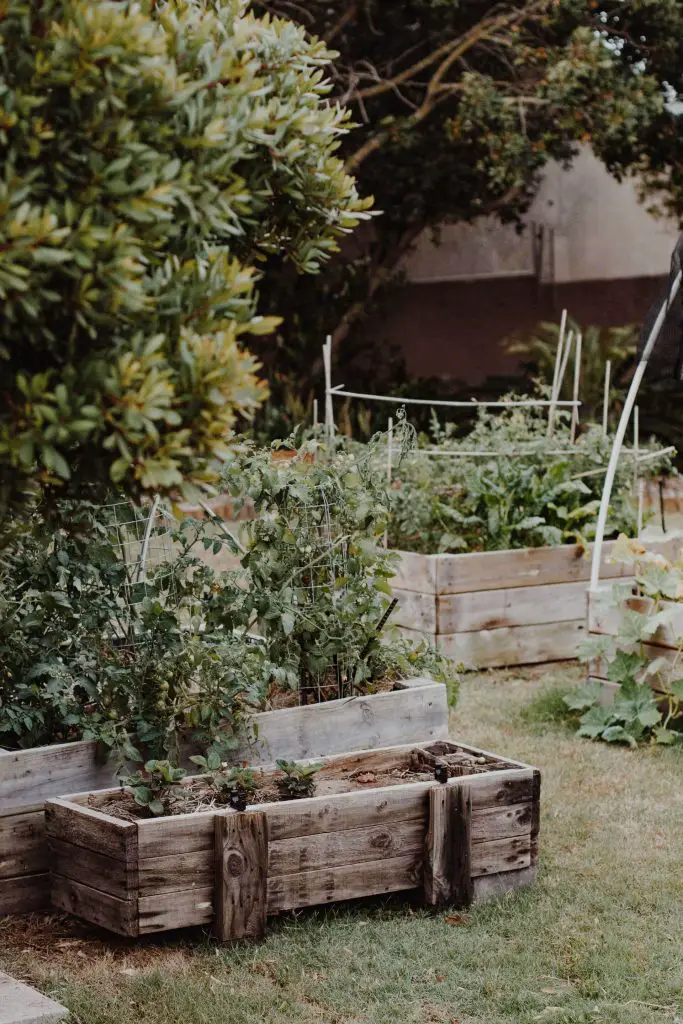
Benefits Of Having Clay Soil
While clay is not the most ideal tomatoes soil type, one of the reasons why it’s possible to successfully grow healthy tomatoes is that it is full of valuable nutrients!
The particles in clay soil attract and hold well to nutrients like magnesium, calcium, and potassium that help plants grow.
The trick is to make these nutrients accessible in the soil for tomatoes 🙂
You will need to amend, mulch, and manage irrigation accordingly to tap into the rich source of nutrition.
Doing this will increase your chances of harvesting juicy tomatoes at the end of the growing season.
How Can You Make Your Clay Soil Better For Gardening?
Improving your clay soil will take hard work but you will definitely see an improvement in the structure of your soil.
This will eventually make it easier to work with even for other plants you’re planning on harvesting!
Once the bulk of the work is done once, you will just need to maintain it annually to prolong the soil improvement.
1. Rotate Your Crops
Once you’ve successfully grown your own tomatoes, you’d definitely want to grow them again next year!
Just remember that the tomatoes should be rotated to a new spot after the first year.
This is important in order to prevent soil-borne diseases, especially insect pests that may prefer one type of plant over another.
The great news is you can continue to plant other vegetables that grow well in clay soil in that spot. I would personally recommend cruciferous vegetables like broccoli or cabbage.
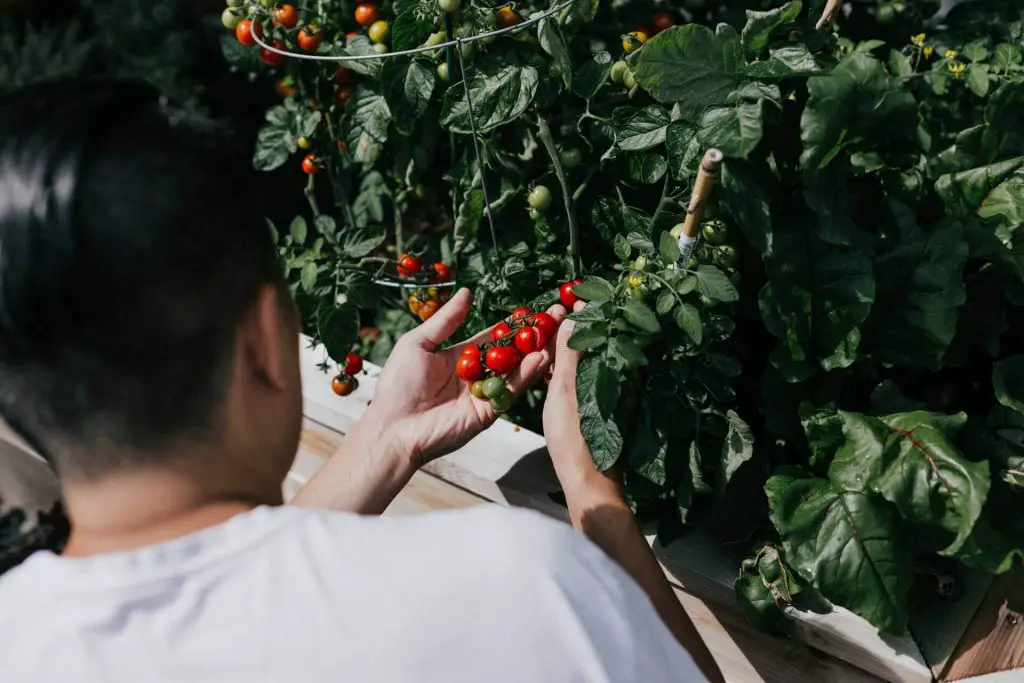
2. Till The Soil When The Time Is Right
When you need to till the soil, it’s essential that you time it right. Wait until the soil is moist enough to crumble with your hands easily.
If you till when the ground is wet, it will make the soil even more compacted.
If you till when the ground is too dry, it will probably break your tool!
3. Add Compost And Humus
My favorite soil additives for tomatoes are compost and humus.
Incorporating compost and humus into a few inches of your garden soil will help pull apart the clay particles. This helps improve the soil structure and drainage over time.
4. Add Gypsum Or Lime
Gypsum and lime can be helpful in breaking up clay and improving soil structure but they can only be an effective soil amendment under certain circumstances.
Gypsum will help if your clay soil contains high amounts of sodium and lime will alter the pH of your soil.
Make sure to do a soil test to know exactly what you need.
5. Add Organic Material
Organic materials that you can add to the soil include grass clippings, rotted manure, pine bark, and shredded leaves.
These are all great options that help break the compaction of the earth and in turn, improve drainage in general.
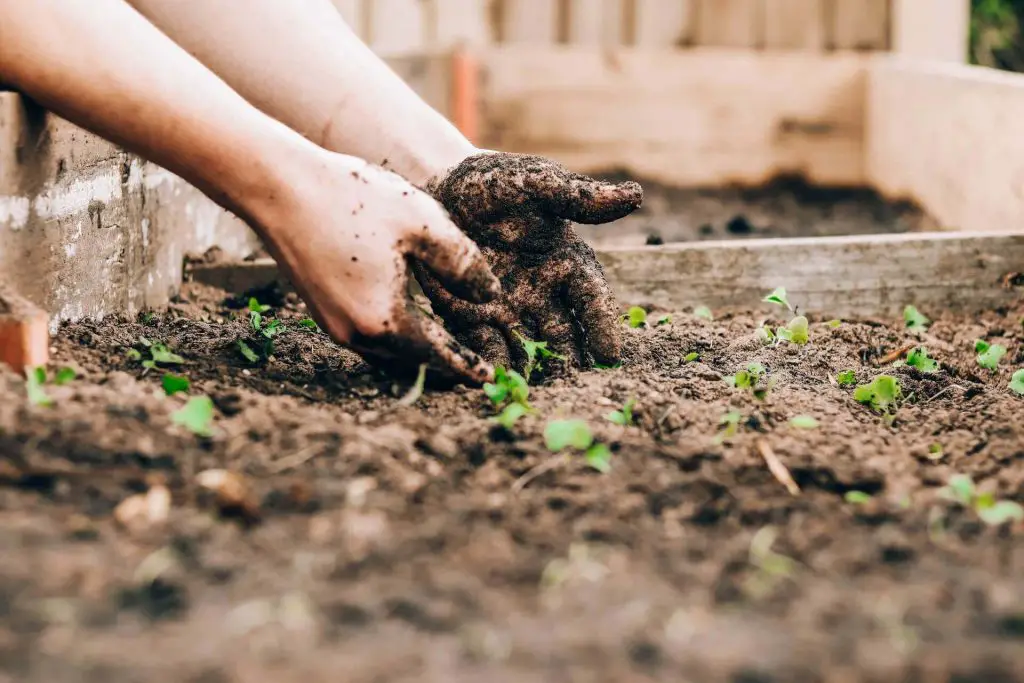
6. Use Wooden Boards When Gardening
Once you have tilled, amended, and aerated the soil, stepping through the garden can compact the soil.
To help protect all your hard work, consider laying down wooden boards as this will help disperse your weight when working in the garden.
The boards will get you close to your plants without causing too much damage to the soil structure.
Frequently Asked Questions
Do Tomatoes Do Well In Clay Soil?
So, do tomatoes do well in clay soil? No, tomatoes do not do well in clay soil as it tends to be alkaline with a pH over 7.0. Tomatoes grow best in slightly acidic soil with an optimum pH between 6.0 – 6.8.
This is one of the reasons why alkaline soil is not suitable for healthy tomatoes. Clay also retains water which prevents nutrients from moving through the soil.
What Is The Best Soil For Growing Tomatoes?
Have you wondered what is the best soil for growing tomatoes? The best soil for growing tomatoes is well-drained, fertile loam with a pH between 5.8 – 7.0.
As with most garden vegetables, tomatoes are not fussy about what type of soil they are grown in. Make sure to mix several inches of compost or manure with about 4-8 inches of soil before planting.
What Plants Can Be Planted In Clay Soil?
Plants that can be planted in clay soil and typically thrive include:
- Iris tend to perform well on heavy soil
- Miscanthus like ornamental grasses do very well in clay
- Heuchera
- Baptisia
- Platycodon
- Hosta
- Aster
- Castor Bean
- Rudbeckia
- Perovskia
- Echinacea
- Coreopsis
- Achillea
- Athyrium
Why Clay Soil Is Not Good For Planting?
Clay soil is not good for planting because it can become waterlogged and it deprives plant roots of oxygen or it can become dry that it gets too hard to dig in.
Although clay soils are not always bad. They hold more water than sandy soils and are rich in nutrients that plants need.
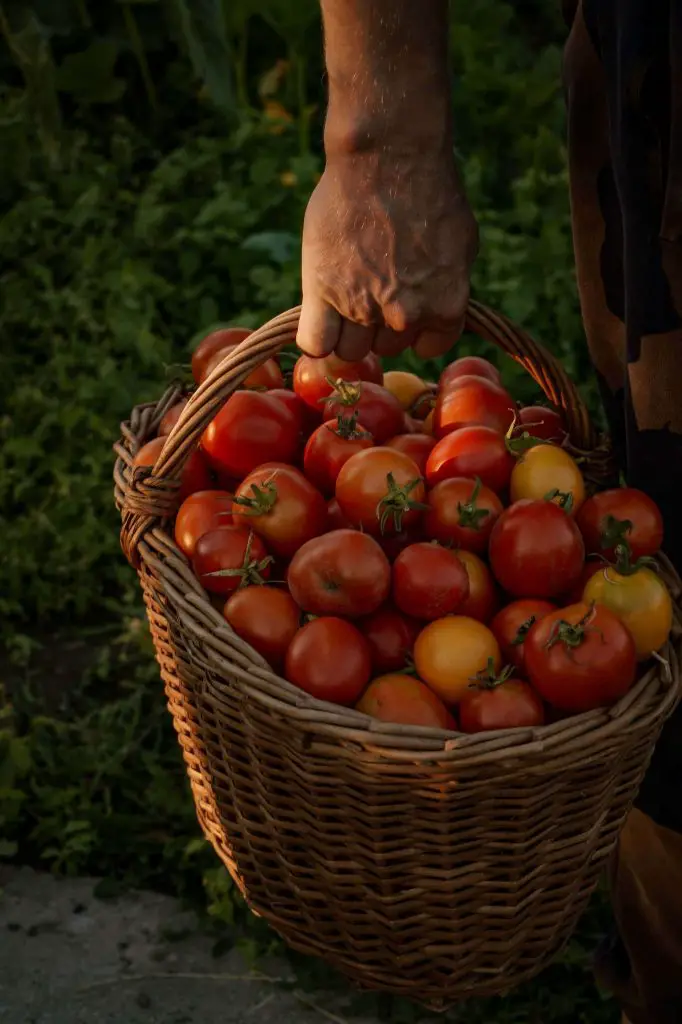
All Set And Excited To Grow Tomatoes In Your Garden?
Now that you know how to grow tomatoes in clay soil, time to take out the gardening tools and start planting this weekend!
It may not be an easy feat but it will be so satisfying to persevere and grow your own tomato crop even with less than ideal weather, sunlight, or soil.
This will help you build confidence to take on other gardening projects!
So there you have it! All the answers you need to know to your question, ‘Can tomatoes grow in clay soil?’.
Let me know in the comments below about your tomato-growing successes and which tip helped you the most. We would love to hear from you!
Related Posts



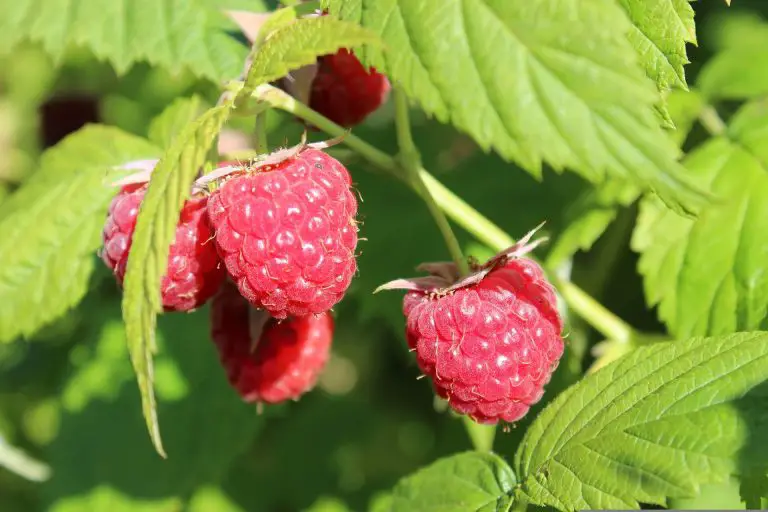
![How To Harvest Oregano Without Killing The Plant? [Personal Experience!]](https://aboveandbeyondgardening.com/wp-content/uploads/2022/10/How-To-Harvest-Oregano-Without-Killing-The-Plant-7-768x442.jpg)
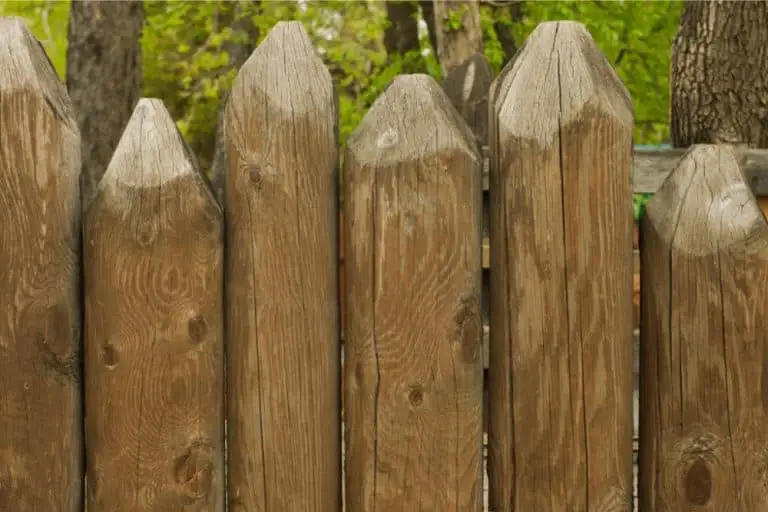
![How Much Water Does A Sunflower Need? [+Growing Tips!]](https://aboveandbeyondgardening.com/wp-content/uploads/2021/10/How-Much-Water-Does-A-Sunflower-Need-768x512.jpg)
![What To Do With A Tree Stump In The Front Yard [Weird + Wonderful Ideas!]](https://aboveandbeyondgardening.com/wp-content/uploads/2021/10/What-to-do-with-tree-stump-in-front-yard-768x512.jpg)
![27 Companion Plants For Basil, The Best and Worst! [2023]](https://aboveandbeyondgardening.com/wp-content/uploads/2022/10/Companion-plants-for-basil-768x512.jpeg)